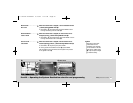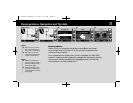
Appendix C — GPS system characteristics and operation
Part IV — Helpful Information: Appendices
Nothing comes close to a Cobra
®
93
GPS basics
. . . . . . . .
How GPS
. . . . . . . . . .
works
The Global Positioning System (GPS) is a space-based radionavigation system. It consists of 24 satellites (which
orbit the Earth at an altitude of approximately 11,000 miles) and ground stations. GPS provides users with accurate
information on position, velocity and time. This is available anywhere in the world and in most weather conditions.
GPS was initiated by The United States Department of Defense in 1973 to reduce the proliferation of navigation
aids. By creating a robust system that overcame the limitations of many previously existing navigation systems,
GPS became attractive to a broader spectrum of users. GPS has been successful in classic applications such
as aviation and marine navigation since it was first developed. Since then, it has become useful for a wide
range of people because its capabilities are accessible using small, affordable equipment.
The GPS satellite network transmits radio signals to earth from high earth orbit. GPS service provides users
with extremely accurate positioning information anywhere on or near the surface of the earth. To accomplish
this, each of the 24 satellites emits signals to receivers below. GPS determines location by computing the
difference between the time that a signal is sent and the time it is received. GPS satellites carry atomic clocks
that provide extremely accurate time information. The time information is placed in the codes broadcast by the
satellite so that a receiver can continuously determine the time the signal was broadcast. The signal contains
data that the NAV ONE system uses to compute the locations of the satellites and to make other adjustments
needed for accurate positioning. The NAV ONE system uses the time difference between the time of signal
reception and the broadcast time to compute the distance from the receiver to the satellite. With information
about the distance to four satellites and the location of each satellite when the signal was sent, the NAV ONE
system can compute its own position: latitude and longitude.


















